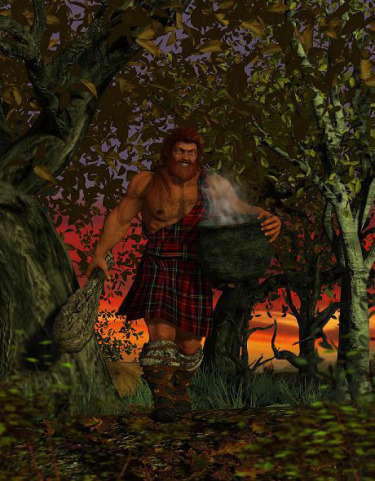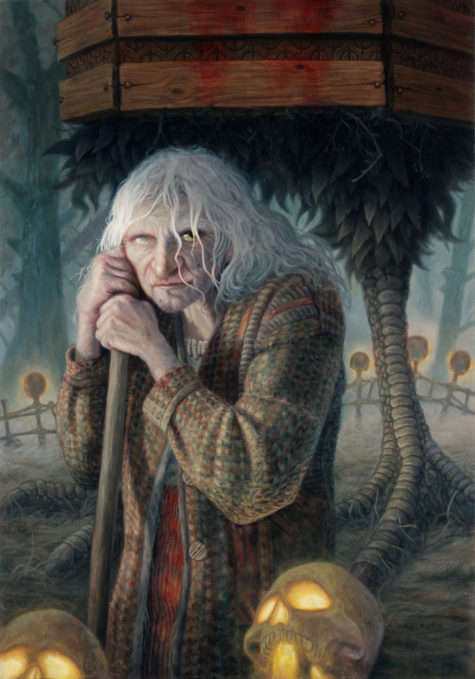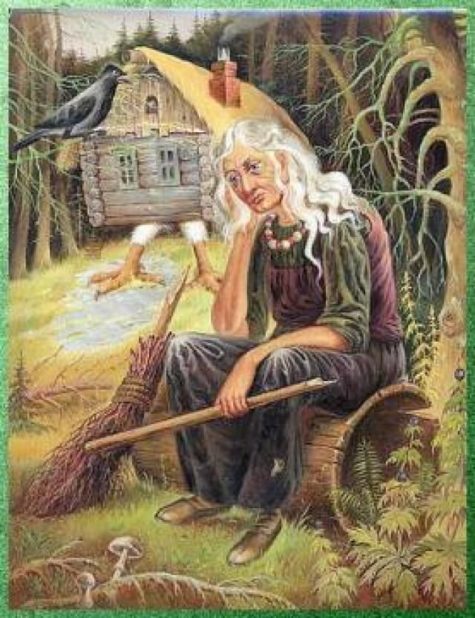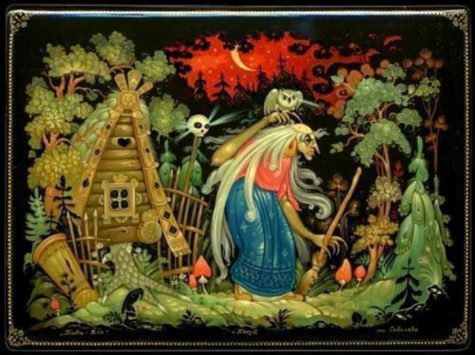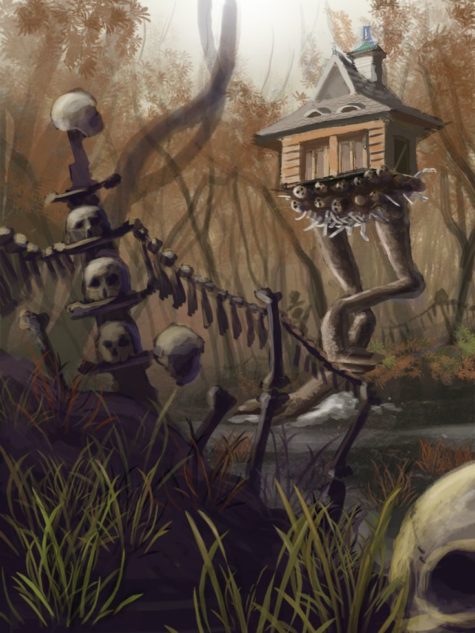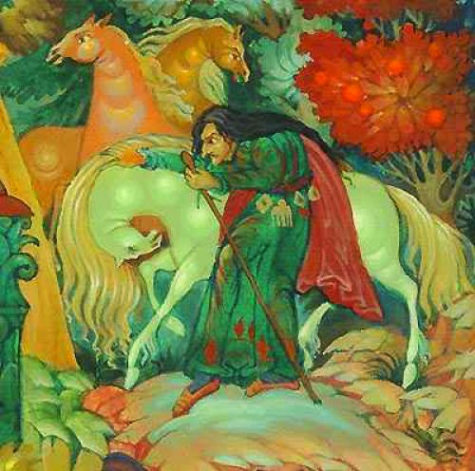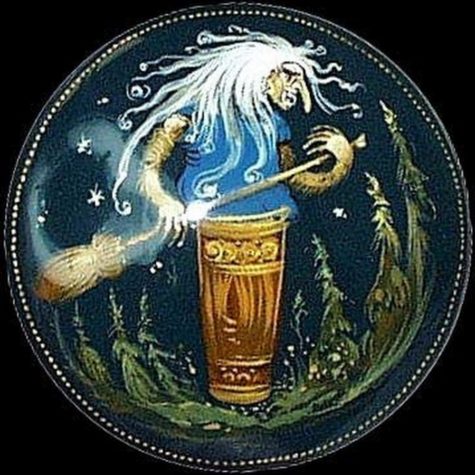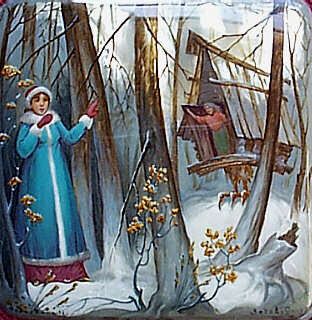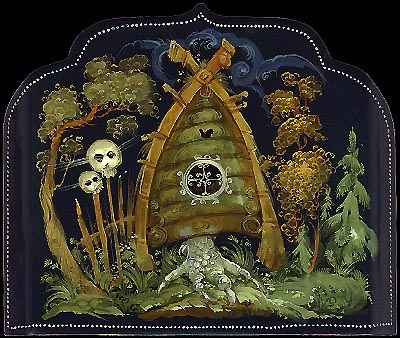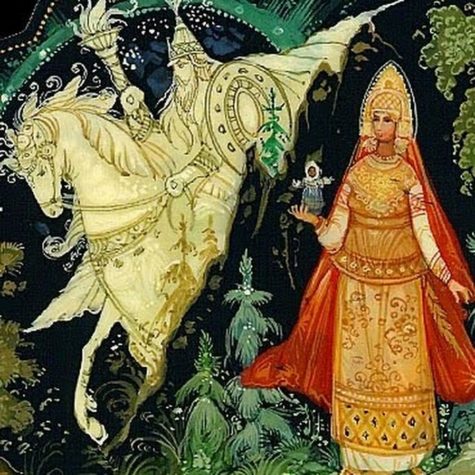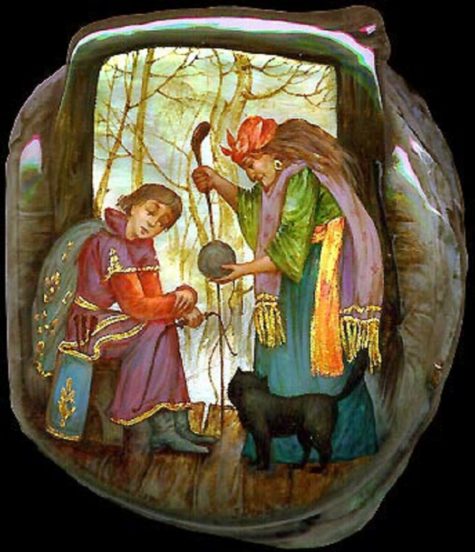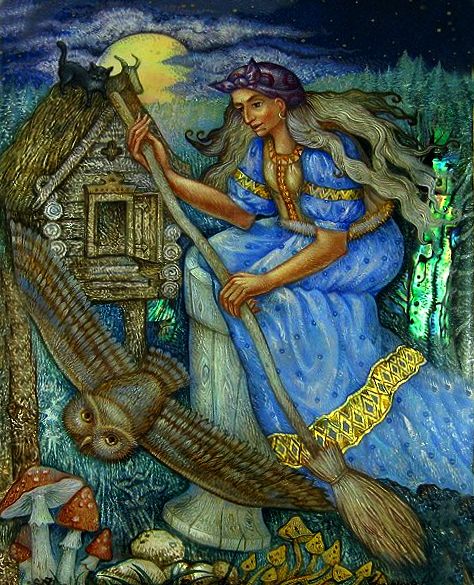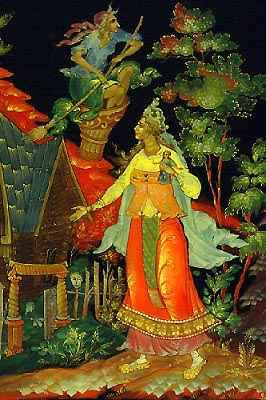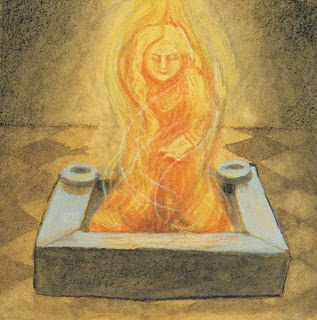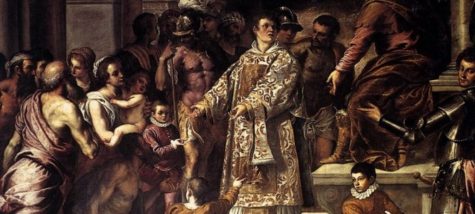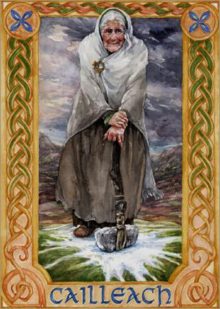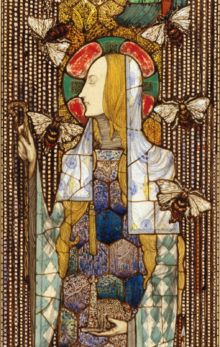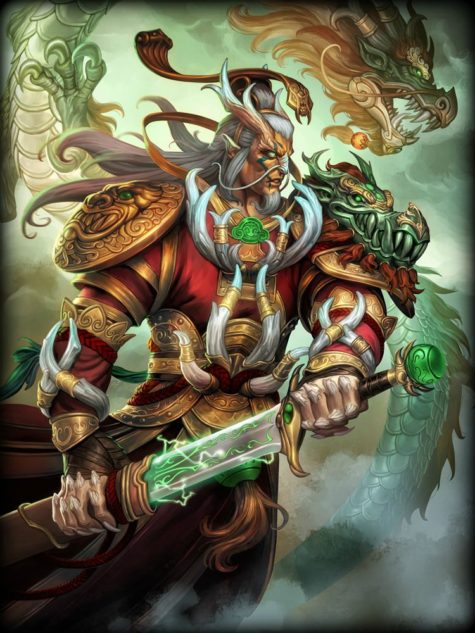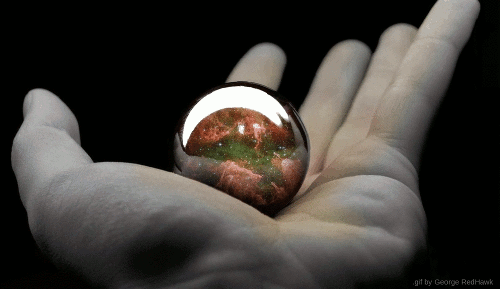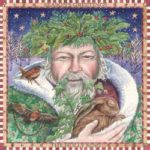shirleytwofeathers
Also known as: Comte de Saint Germain, The Count of Saint Germain, der Wundermann, Saint Germaine, The Wonderman of Europe
Helps with:
- Alchemy, Courage, Direction, Life Purpose, Miraculous Manifestations, Perseverance, Psychic Protection, Space Clearing
- Comfortably interacting with authority figures and influential people
Saint Germain is a loving, benevolent ascended master who wishes to work with lightworkers – that is, people who want to help the world clean up its act. He provides guidance, protection, and courage. He often works in conjunction with the Archangel Michael.
Invocation:
People don’t call Saint Germain, he’s the one who calls first. He seems to just show up wherever light workers are gathered in classes, study groups, or prayer meetings. He works with spiritual teachers to encourage their outgoing nature and leadership skills.
That’s not to say, however, that you can’t request a special audience with him when you desire a message or some type of motivation. Simply think, Saint Germain, I need your help. Wait a moment, and then mentally let him know the situation or question with which you need assistance.
You’ll know that he’s with you because a creative answer will come to you suddenly. You may also see violet-purple sparkles of light in the room. Or, you may start seeing violet-purple everywhere you go, on people’s clothing or on flowers, for instance. You’ll also begin thinking or writing profound thoughts on how to help others.
See also:
About Saint Germain:
Saint Germain isn’t a saint in the Catholic sense and shouldn’t be confused with “Saint Germaine Cousin” or “Saint Germanus,” two actual Catholic saints. Instead, he was a real man who was a royal count of the French region called “Saint Germain”
His real full name is Comte de Saint Germain, or The Count of Saint Germain. He was a man born of royal blood somewhere between 1690 and 1710, although reports conflict as to his parents’ lineage. Some say that his mother was Marie de Neubourg, the widow of King Charles II of Spain, and that his father was Comte Adanero. Others (particularly those associated with Theosophy) hold that his father was Prince Ragoczy of Transylvania. A few reports say that he was Prince Ragoczy. Still others claim he’s a Portuguese Jew.
It is believed by some that Sir Francis Bacon faked his own death on Easter Sunday, 9 April 1626, attended his own funeral and made his way from England to Transylvania where he found lodging in a castle owned by the Rakóczi family. There, on 1 May 1684, Bacon, by using alchemy, became an immortal occult master and adopted the name Saint Germain and became one of the Masters of the Ancient Wisdom, a group of beings that, Theosophists believe, form a Spiritual Hierarchy of planet Earth sometimes called the Ascended Masters. Thus, according to these beliefs, Saint Germain was a mysterious manifestation of the “resurrected form” (or “resurrection body”) of Sir Francis Bacon.
Some write that his name Saint Germain was invented by him as a French version of the Latin Sanctus Germanus, meaning “Holy Brother”. In the Ascended Master Teachings (but not in traditional Theosophy), the Master R, or the Master Rakóczi, also known as the Great Divine Director (a term introduced by Guy Ballard in the 1930s) is a separate and distinct being from Saint Germain – the Master Rakoczi is regarded in the Ascended Master Teachings as a name used by the Great Divine Director when he was functioning as Saint Germain’s teacher in the Great White Brotherhood of Ascended Masters.
Saint Germain, as one of the Masters of the Ancient Wisdom, is credited with near god-like powers and with longevity. Many groups honor Saint Germain as a supernatural being called a Master of the Ancient Wisdom or an Ascended master. In the Ascended Master Teachings he is referred to simply as Saint Germain, or as the Ascended Master Saint Germain. As an Ascended Master, Saint Germain is believed to have many magical powers such as the ability to teleport, levitate, walk through walls, and to inspire people by telepathy, among others.
Theosophists consider him to be a Mahatma, Masters of the Ancient Wisdom or Adept. Helena Blavatsky said that he was one of her Masters of Wisdom and hinted that he had given her secret documents. Some esoteric groups credit him with inspiring the Founding Fathers to draft the United States Declaration of Independence and the Constitution, as well as providing the design of the Great Seal of the United States.
In New Age beliefs, Saint Germain is always associated with the color violet, the jewel amethyst, and the Maltese cross rendered in violet (usually the iron cross style cross patee version). He is also regarded as the “Chohan of the Seventh Ray” According to Theosophy, the Seven Rays are seven metaphysical principles that govern both individual souls and the unfolding of each 2,158-year-long Astrological Age. Since according to Theosophy the next Astrological Age, the Age of Aquarius, will be governed by the Seventh (Violet) Ray (the Ray of Ceremonial Order), Saint Germain is sometimes called “The Hierarch of the Age of Aquarius”. According to the Ascended Master Teachings, Saint Germain is “The God of Freedom for this system of worlds.” According to the Ascended Master Teachings, the preliminary lead-up to the beginning of the Age of Aquarius began on 1 July 1956, when Ascended Master Saint Germain became the Hierarch of the Age of Aquarius, replacing the former Astrological Age Hierarch, the Ascended Master Jesus, who had been for almost 2,000 years the “Hierarch of the Age of Pisces”. Continue reading
Dagda is the most prominent God of Celtic Mythology, leader of the Tuatha De Danann (Irish race of Gods of Mythology). He is identified with the Weish Gwydon and the Gallic Sucellos.
His titles and attributes:
- Mighty Red One
- Groat Knwdelle
- Ruler over Life and Death
- God of Time and Protector of Crops
- The Good God and Ollathir (All Father)
- God of Earth and Treaties
- Master of Magic
- Fearsome Warrior
Chief of the Tuatha Dé Daan, oldest of the Celtic deities, Dagda literally means “the good god.” What was his real name? That information may be reserved for initiates or he may be so old, no one knows any longer.
The Dagda is a spirit of magic and abundance. He is the tribal All Father, deity of the Druids, Lord of Regeneration, provider of plenty, Captain of Abundance. He is the Lord of New Grange. His children, Brigid and Angus Mac Og, are among the most powerful and beloved Irish deities. He plays the role of ideal father for his devotees.
The Dagda’s barrow (sidhe) features an inexhaustible supply of drink, three trees that always bear fruit, and a pig that is always alive, even though it’s slaughtered and consumed daily. He may be the prototype of the Grail King. The Romans identified him with Hercules.
The Dagda is the master of paradox. Incredibly wise and powerful, he’s uncouth and bumbling too. He’s an old, bald, fat, sloppy guy, but he’s a sex master too, a fertility spirit renowned for virility and sexual prowess. The Dagda engages in the Great Rite with great goddesses like the Morrigan and Boann.
- Mount: A black stallion named Ocean
- Sacred Day: On Samhain, the Dagda performs the Great Rite. On a day otherwise associated with death, the Dagda creates new life.
- Offerings: Oatmeal, porridge, mead, Irish whiskey, poteen
Manifestation:
A big, bald, bumbler with a beer belly; the Dagda wears a rustic tunic that no longer fits him. It’s too short for him, barely covering his buttocks and periodically exposing them. Don’t be fooled by his appearance. The Dagda only plays the fool; he’s brilliant, wise, and powerful. Furthermore, although it’s his posterior that’s mockingly discussed in myth, at least in the surviving ones recorded by Christian priests, tunics don’t only ride up in the back.
He was traditionally portrayed wearing a brown tunic that reached his hips, letting his huge penis drag while walking, a hooded cape that covered his shoulders and horse boots.
Dagda was commonly believed to be a crude and comical God. Some characteristics of The Good God, were his super strength, his insatiable need for women and food. He is a phallic deity, master of fertility and abundance. He was also a skilled artisan.
This God had various precious possessions:
- A cauldron with unlimited food supply called Undry.
- A living oak harp named Uaithne that he used to summon the seasons.
- An iron cub that could kill nine men with one side and bring them back to life with the other side.
- Three trees that always bear fruit.
- A pig that is always alive, even though it’s slaughtered and consumed daily.
The Dagda, a master harper, has a repertoire of magical songs:
- Those that make him invisible on the battlefield.
- Songs to seduce people into sex or foolish behavior, against their better judgment.
- And music of Sorrow, of Joy and Dreaming.
In Slavic folklore, Baba Yaga is a supernatural being (or one of a trio of sisters of the same name) who appears as a deformed and/or ferocious-looking woman. Baba Yaga flies around in a mortar, wields a pestle, and dwells deep in the forest in a hut usually described as standing on chicken legs (or sometimes a single chicken leg).
Baba Yaga may help or hinder those that encounter or seek her out. She offers comprehension, not comfort. She sometimes plays a maternal role, and also has associations with forest wildlife. She is a many-faceted figure, capable of inspiring those who seek to see her as a Cloud, Moon, Death, Winter, Snake, Bird, Pelican or Earth Goddess.
Baba Yaga is an enigmatic spirit who rules the conjunction of magic and harsh reality, of limits and possibilities. This Death Spirit provides fertility when she chooses, but she also consumes those who disappoint her. She is iron-toothed, boney-legged, and wears a necklace of human skulls. Her home is surrounded by a fence crafted from human bones and, when inside of her dwelling, she may be found stretched out over the stove, reaching from one corner of the hut to another.
Like her compatriot spirits, Kali and La Santisima Muerte, Baba Yaga encompasses all the mysteries of life and death; contemplate her in order to begin to comprehend these mysteries. I don’t suggest contacting her (the Baba has little patience; don’t waste her time without good reason), a kind of magical contemplation is recommended instead.
Connecting With Baba Yaga
The Baba Yaga’s Feast Day is usually celebrated on the first full moon in November, but a connection can be made at any time during the year.
- Build an altar featuring birch wood and leaves, animal imagery, a mortar, pestle and broom, and especially, food and drink.
- Baba Yaga is always voraciously hungry. Offer her real food or cut out photo images for the altar. She is especially fond of Russian extravagances like coulibiac.
- Offer her a samovar with blocks of fine Russian caravan tea and perhaps a water pipe.
- Sit with the altar, gaze at it from different angles, play with the objects and see what comes to mind.
Be patient, and expect that it will take time to achieve a connection and a response.
More About Baba Yaga
The ‘old woman’ of autumn was called Baba by the Slavic inhabitants of eastern Europe, Boba by the Lithuanians. This seasonal divinity lived in the last sheaf of grain harvested in a year, and the woman who bound it would bear a child that year. Baba passed into Russian folk legend as the awesome Baba Yaga, a witchlike woman who rowed through the air in a mortar, using a pestle for Her oar, sweeping the traces of Her flight from the air with a broom.
A prototype of the fairytale witch, Baba Yaga lived deep in the forest and scared passersby to death just by appearing to them. She then devoured Her victims, which is why Her picket fence was topped with skulls. Behind this fierce legend looms the figure of the ancient birth-and-death Goddess, one whose autumn death in the cornfield led to a new birth in spring.
Baba Yaga is a Slavic version of Kali, the Hindu Goddess of Death, the Dancer on Gravestones. Although, more often than not, we consider Baba Yaga as a symbol of death, She is a representation of the Crone in the Triple Goddess symbolism. She is the Death that leads to Rebirth. It is curious that some Slavic fairy tales show Baba Yaga living in Her hut with Her two other sisters, also Baba Yagas. In this sense, Baba Yaga becomes full Triple Goddess, representing Virgin, Mother, and the Crone.
Baba Yaga is also sometimes described as a guardian of the Water of Life and Death. When one is killed by sword or by fire, when sprinkled with the Water of Death, all wounds heal, and after that, when the corpse is sprinkled with the Water of Life, it is reborn. The symbolism of oven in the Baba Yaga fairy tales is very powerful since from primordial times the oven has been a representation of womb and of baked bread. The womb, of course, is a symbol of life and birth, and the baked bread is a very powerful the image of earth, a place where one’s body is buried to be reborn again.
It is interesting that Baba Yaga invites Her guests to clean up and eat before eating them, as though preparing them for their final journey, for entering the death, which will result in a new clean rebirth. Baba Yaga also gives Her prey a choice when She asks them to sit on Her spatula to be placed inside the oven: if one is strong or witty, he or she escapes the fires of the oven, for weak or dim-witted ones, the road to death becomes clear.”
Baba Yaga lives in the middle of a very deep forest, in a place which is often difficult to find unless a magic clue (a ball of yarn or thread) or a magic feather shows the way. The old hag lives in a wooden hut on two chicken legs (sometimes three or four legs are described).
Usually the hut is turned with its back towards a traveler, and only magical words can make it turn around on its chicken legs to face the newcomer. Very often, the hut revolves with loud noises and painful screams that make a visitor cringe. This serves to frighten the reader, showing the hut’s old age, and to show that Baba Yaga does not care about her hut’s well being.
- Baba Yaga fairy tales can be found at Widdershins.
It is also fascinating that some fairy tales describe the hut as being a unique evil entity: firstly, it has the ability to move on its chicken legs. Secondly, it understands human language and is able to decide whether and when to let a visitor enter its premises. Finally, the hut is often depicted as being able ‘to see’ with its eyes (its windows) and ‘to speak’ with its mouth (its doorway). I also cannot help feeling that the hut is able ‘to think’, and one can observe these thoughts as wild powerful clouds of steam emerging from the hut’s chimney. What powerful imagery!
Baba Yaga’s hut is often surrounded by fence made of human bones and topped with human skulls with eyes. Instead of wooden poles onto which the gates are hung, human legs are used; instead of bolts, human hands are put in; instead of the keyhole, a mouth with sharp teeth is mounted. Very often Baba Yaga has her hut is protected by hungry dogs or is being watched over by evil geese-swans or is being guarded by a black cat. The gates of Baba Yaga’s villa are also often found to be guardians of Yaga’s hut as they either lock out or lock in the Witch’s prey.
Baba Yaga – The Black Goddess – An Essay
For those of you who enjoy a more scholarly approach to the goddess, here is an essay by an anonymous author about Baba Yaga, the Black Goddess, and what her mythology represents.
Baba Yaga and her Magical Colts
I have been thinking and thinking about the image and story of Baba Yaga now for months and wondering how girls and women can resolve the seemingly paradoxical story of a bony heartless witch with the image of innocence of a rejected and abandoned girl. The following essay outlines how we use myth and story to perpetuate unconscious mindsets and it also unveils the gifts that these stories unfold in our inner psyche.
The story of Baba Yaga is prime among many images of the Black Goddess. The Black Goddess is at the heart of all creative processes and cannot be so easily viewed. Men and women rarely approach her, except in fear. Women are learning of her through the strength and boldness of elder women who are not afraid to unveil her many faces.
Sofia as wisdom lies waiting to be discovered within the Black Goddess who is her mirror image. Knowing that, until we make that important recognition, we are going to have to face the hidden and rejected images of ourselves again and again.
As women, we are confronted throughout our lives with unavoidable body messages regarding the uniqueness of our form and the inevitable changes that characterize aging and the passage of time. Although aging presents difficult challenges for both men and women, women confront some specific difficulties because of their gender. In traditional narratives, the end of biological fertility has relegated women to the status of “old women” who are stereotypically viewed as poor, powerless, and pitiful in our sexist and youth oriented culture. Baba Yaga, often referred to as the Black Goddess, and Vasalisa, often representing Sophia, are intrinsic to the psyche of girls and women because they shows us that the illusion of form can hide wonderful qualities within.
Baba Yaga, ugly, haglike, flying in her mortar,
seemingly isolated and abandoned,
yet broom at hand, ready to sweep the clouds across the skies
and reveal her hidden cosmic nature
One of the cruelest of stereotypes that older women face is the “menopausal woman.” These are accentuated by the very fact that younger women are often rejecting or distancing to older women in society, unwilling to identify with women older than themselves. These experiences are painful confirmations that the aging woman no longer meets the social criteria of a physically and securely attractive woman. The common result for most women is the activation of shame — as if becoming/looking older means that something is deeply and truly wrong with oneself.
Conscious femininity is a cyclic process and involves an awakened awareness of the triple form of the Goddess – Mother, Virgin and Crone – and how she exists simultaneously and continuously in all of our psyches, each taking center stage in awareness at different moments. These archetypal patterns are considered intrapsychic modes of consciousness in the individual, and the primordial image of a powerful and integrated woman, crowned with wisdom gleaned through real experience, is again reemerging through both the individual and collective psyches of humanity.
First, however, women must learn to embrace, respect and honor their changing bodies, abilities, capacities and WISDOM. We can learn a lot from Baba Yaga!
An archetype is a universal symbol, an inherited mental image to which humankind responds, and which is often acted upon as an unconscious reaction to human experience. These stories are no different and the story of Baba Yaga exemplify this phenomena.
The female experience is symbolized by and archetypally corresponds with the ancient Triple Goddess as the creator and destroyer of all life — “the ancient and venerable female divinity embodying the whole of female experience as Virgin, Mother, Crone.” The archetypal figure representing the end of a woman’s childbearing years, or the “third age” for women, is the third aspect of the Triple Goddess, the Crone.
At the climacteric or menopause, women are often forced to stand precipitously between the culmination of past experiences, to realize that youth is left behind, and prepare a new space within whereby a fresh image will coalesce as she envisions her future. This is real labor. The traditional constructs that are available to women are largely influenced by patriarchal standards of youth and beauty and we need fresh constructs that honor the diversity of life in all of its forms.
When a culture’s language has no word to connote “wise elder woman,” what happens to the women who carry the “Grandmother” consciousness for the collective? Prejudicial (prejudged) attacks throughout history against older women symbolized patriarchy’s feminization of fear: the ultimate fear of annihilation, to be nonexistent (no existence). Centuries-long indoctrination limits our imagination so that we see this ancient aspect of the feminine only in her negative forms. We see her as the one who brings death to our old way of being, to our lives as we have known them, and to our embodied selves.
Our fear of the unconscious makes the Crone or Baba into an image of evil. The prevalence of paranoid masochism finds its expression through feminine perversion. Kristeva writes from “Stabat Matar” that: “Feminine perversion is coiled up in the desire for law as desire for reproduction and continuity, it promotes feminine masochism to the rank of structure stabilizer.” Structure stabilizer! Natural death is to be feared, hidden away, certainly not recognized as part of the natural rhythm of cycles of birth, death and rebirth?
Only when death becomes projected does it become a monster to be feared. There is an unconscious belief that a woman who has outlived her husband has somehow used up his life force. Walker claims that the secret hidden in the depths of men’s minds is that images of women are often identified with death. Women have also bought into this mindset largely because of lost connection with their own spirituality and the natural cycles of nature!
Vasalisa Approaching the Hut of Baba Yaga
To be sent to Baba Yaga was tantamount to being sent to one’s death, but Vasalisa was actually helped by Baba Yaga. By facing her own worst fear — death itself, Vasalisa became liberated from her previous situation and immaturity.
The myths of our society tell us much about the attitudes and world view of the myth-owners, and these attitudes are the products of women’s roles within the wider society. Myth arises out of the collective level of humankind’s experience, which is presented through images and symbols that resonate within our psyche. It is something we inherit from our ancestors and it is expressed through our genetic, racial memory. Kaufert reminds us however, that “myth is a system of values presented as if it were a system of facts.”
The symbol of the Crone is unique to a feminine worldview where the face of the Virgin and the fecund Mother, the Virgin Mother Mary, was absorbed in Western tradition into Judeo-Christian imagery. Likewise, we see the image of Vasalisa embodied as this innocence. The Crone has retained much of her pre-patriarchial character where she has haunted the fringes of Western culture, largely ignored, unacknowledged and rejected; one that often strikes fear into the hearts of men and some women because she has tremendous power and cannot be confined.
“Wise women,” in the past, were literally seen as having the power of life and death. They symbolized maturity, authority, attuned to nature and instinct. They were women whom men could not bind by making pregnant. They personified, as Hall writes:
“That aspect of life that men would most like to control but against which they are powerless: death. The Crone was healer, seer, medicine woman and, when death arrived with inexorable certainty, she was the mid-wife for the transition to another life.”
Baba Yaga’s Hut standing on its magical Chicken-Leg,
yet revolving like the solar symbol it is,
always rising and setting in a new place,
bringing birth — and death — daily.
Over time, and in recent history the Crone became associated with the dark side of the feminine; the withered old hag, the witch. Ironically, the word “Hag” used to mean “holy one” from the Greek hadia, as in hagiolatry, “worship of saints.” And during the middle ages hag was said to mean the same as fairy.
In deconstructing these familiar images of the older aging woman, we must first identify their symbolic roots and challenge them in order to allow for potent, vital images that energize women’s potential creative spiritual evolution. In this quest it is crucial to find valued female images that present creative and spiritual power, that offer a paradigm of ongoing formation and integration. If we do not do so, we risk encountering images of women that reinforce stereotypical models and moreover, can only alienate us from our own truest selves.
The Crone is a figure who incorporates both dark and light, life and death, creation and destruction, form and dissolution. The doll [Vasalisa’s doll, given to her by her dying mother] becomes the symbol of the Sibyl, a figure of inspiration and intuition. She acts as a guide through the great passages of life, leading a woman into her own inner knowing.
Vasalisa and her doll with the White Horseman of Dawn(who reports daily to Baba Yaga, just like the Red Horseman of Noon, and the Black Horseman of Evening)
We see this in the story of Vasalisa and Baba Yaga, the innocence of the maiden coming of age through a series of tasks. Baba Yaga forces Vasalisa to look within through intuition (the doll) and she awakens to the illuminating light that is carried in her heart. Within the simple limits of a folk story, the interactions of Sophia (Vasalisa) and the Black Goddess (Baba Yaga) are demonstrated. Baba Yaga or the Crone also embodies the inner archetype of Sophia, feminine wisdom.
Hall writes: “Sophia is a Wise Woman, one who epitomizes feminine thought. This thought is of a particular kind. It is ‘gestalt’ or whole perception; it synthesizes and looks at the overall pattern; it is logical but empathetic, and combines acute observation with intuition. It is relational (taking account of the past in order to project forward into the future), and it arises out of care and concern for man and womankind. It uses both the left and right brain modes of thought. It is creative and concerned with vision and solutions — attributes which are an integral part of the Wise Woman.”
Sophia plays, hides, adepts, disguises, and brings justice. Interestingly, we see these very same qualities attributed to the wise woman as being Vasalisa’s, only not fully formed. Thus affirming the feminist perspective of the Goddess in all of her aspects and that all ways to wisdom are valid paths. Girls and women are encouraged to rely on their own subjective experience or on the communal experience of other women This is a very important point!
From a feminist perspective, the entry into the third phase of women’s life is seen as a time of spiritual questing, renewal and self-development. It is a time where women are encouraged to explore themselves through interaction with other females who are providers of friendship, support, love, even sexual satisfaction, rather than a woman’s family.
Baba Yaga helping young Ivanushka
Likewise, the young girl growing into maidenhood needs the guidance and wisdom that elder women can provide. She must receive the gifts that the wise ones can give her. Baba Yaga may appear as a witch, yet she is instrumental in folk traditions. She aids heroes to find weapons, simplifying tasks and quests when she is treated with courtesy. Her transposed reflection is none other than Vasilisa the fair – the young righteous maiden who defeats her opposite aspect by truth and integrity.
The older woman is the keeper of the wisdom and tradition in her family, clan, tribe, and community. She is the keeper of relations, whether they be interpersonal or with all of nature. Every issue is an issue of relationship. It is assumed that she has a deep understanding of the two great mysteries, birth and death.
Another quality is the ability to be mediator between the world of spirit and earth. She is emancipated from traditional female roles of mothering and is free to make a commitment to the greater community. As a result of this freedom, there is an abundance of creativity unleashed in this phase of life; often expressed through art, poetry, song, dance, and crafts, and through her sexuality as she celebrates her joy (Joussance).
This elder time must again become a stage of life revered and honored by others and used powerfully in service by women themselves. The elder “Wise-woman” can represent precisely the kind of power women so desperately need today, and do not have: the power to force the hand of the ruling elite to do what is right, for the benefit of future generations and of the earth itself.
A powerful Baba Yaga, flying in her mortar,
protecting her forests, and banishing all obstacles with her pestle and broom.
Like Baba Yaga, the Crone must help us by her example and “admonish us to revere all peoples and all circles of life upon this earth . . . not only important for the dignity and self-esteem of each woman, but vital for the countenance of life on our sweet Mother Earth.” Since men define power as the capacity to destroy, the Destroying Mother Crone must be the most powerful female image for them, therefore, the only one likely to force them (us) in any new direction.
A woman who denies her life process at any time in her development, clinging desperately to outmoded images, myths and rituals of her past, obscures her connection with Self, the Divine, and therefore, with her spiritual heritage, the natural universe. The same holds true for our daughters, maidens who are coming of age. There is a kind of internal balance and sense of holiness available to us when we accept ourselves as part of a world that honors cycles, changes, decay and rebirth. It is time for women to reflect and give form to the authentic self in its evolving, formative process.
The woman who is willing to make that change must become pregnant with herself, at last. She must bear herself, her third self, her old age with labor. There are not many who will help her with that birth. To Crone is to birth oneself as “Wise-woman,” and see the world through new eyes.
We have not had the safety valve of feminine metaphor in our spiritual understanding; consequently, the Feminine, both Divine and human, have appeared monstrously contorted, threatening and uncontrollable.
The Black Goddess lies at the basis of Spiritual knowing, which is why her image continuously appears within many traditions as the Veiled Goddess, the Black Virgin, the Outcast Daughter, the Wailing Widow, the Dark Woman of Knowledge.
The way of Sophia is the way of personal experience. It takes us into the realm of “magical reality,” those areas of our lives where extraordinary vocational and creative skills are called upon to manifest. Those treasures of Baba Yaga and Vasalisa lie deep within each of us, waiting to be discovered.
Baba Yaga and Vasalisa,
Crone and Puella [Maiden]: Two Aspects of One Archetype
Sources:
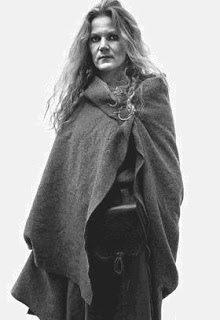 July 9th is the Day of Unn the Wise person. Also known as Aud the Deep-Minded, Unn was a great matriarch who established dynasties in the islands Orcadas, Feroe and Iceland.
July 9th is the Day of Unn the Wise person. Also known as Aud the Deep-Minded, Unn was a great matriarch who established dynasties in the islands Orcadas, Feroe and Iceland.
About Unn:
Unn was a powerful figure from the Laxdaela Saga who emigrated to Scotland to avoid the hostility of King Harald Finehair. She was the second daughter of Ketill Flatnose, a Norwegian hersir, and Yngvid Ketilsdóttir, daughter of Ketill Wether, a hersir from Ringarike. Unn married Olaf the White, son of King Ingjald, who had named himself King of Dublin after going on voyages to Britain and then conquering the shire of Dublin. They had a son named Thorstein the Red.
She established dynasties in the Orkney and Faroe Islands by carefully marrying off her grand daughters. Unn then set off for Iceland.
On her ship were twenty men, all of whom were free, but she was still the leader of them, proving that she was respected, but also that she was strong-willed enough to command a ship alone without the help of a man. In addition to the crew, there many other men on her ship, prisoners from Viking raids near and around Britain. They all came from good families, and were called bondsmen. Unn gave these men their freedom once they were in Iceland, making them freed-men, a class between slave and free, where they were not owned, but did not have all the rights of a free man. She also gave them all a great deal of land to farm on and make a living.
Unlike most early Icelandic settlers, Aud was a baptized Christian and is commonly credited with bringing Christianity to Iceland. Aud erected crosses where she could pray on a prominent hill within her lands, now known as Krossholar (Krosshólaborg).
As a settler in Iceland she continued to exhibit all those traits which were her hallmark-strong will, a determination to control, dignity, and a noble character. In the last days of her life, she established a mighty line choosing one of her grandsons as her heir. She died during his wedding celebration, presumably accomplishing her goals and working out her destiny in this life. She received a typical Nordic ship burial, surrounded by her treasure and her reputation for great deeds.
Note: In some pagan calendars this is shown of “Day of Un the Wise Person” which is a misprint.
Source: Asatru.org
Goddess Fuji, also known as Fuchi, is a powerful and almighty goddess of fire. The ancient people of Japan depended on her favor and her strength. The majestic mountain, Fuji was even named after her. Both seem beautiful and soft like a light breeze, but their fire can be very powerful and destructive. Fuji is the goddess of fire; honor her and release her into your life.
Fuji, goddess of fire, is much like her own mountain; she is a volcano. Almost always she is calm and peaceful, but she can unleash a terrible blaze of fire destroying all that stands in her way when angry. Yes, fire can be impossible to beat, but it can also be simple and good. Its energy lights our way, cooks our food, warms and dries us. At times we all enjoy the warm flickering of a fire. Sometimes we love them so much that we imitate them with a gas fire if we don’t have a fireplace. Fuji as a fire goddess can be called upon to help us control the fire that sets so many things ablaze.
Fuji, like everyone else, is not perfect. Take this story, for example. Once the Goddess Fuji was fighting with Mt. Hakusan’s god over whose mountain was taller. Amida Buddha created an ingenuous way to measure: he connected the two mountain peaks with a long pipe and poured water in one end. Fuji was proud until the water came rushing down on her head. However, her humiliation didn’t last long. Fuji struck Mt. Hakusan with eight blows, creating the eight craters near its summit.
You do not need a volcano to honor Fuji. Fuji dwells in the hearth of every home. The hearth or fireplace serves as her altar. Offerings to Fuji include millet, beer, rice beer, and a well tended flame. These offerings may be fed directly to the fire. Your gift can be as simple as a single candle flame.
To honor and respect Fuji, you can use a fire ritual. Ancient fire rituals are almost always associated with women and goddesses. Fire rituals have survived since we first tamed fire to keep warm in caves. The fireplace is still the center of many homes, and candles are still lighted at birthdays and funerals. Fire rituals also exist for cleansing and purifying in traditional and modern medicine.
Known as the woman’s best friend, Fuji protects reproductive health and bestows fertility. An ancient ritual to counteract infertility involved having the barren woman lie on another woman’s fresh afterbirth while a circle of women surrounded her, invoking Fuji’s blessings to allow her to conceive. She also protects children. Fuji’s essence is contained in fireplace ashes. These may be collected into small bags and worn or carried as protective amulets.
From Crystal Vaults and other sources
A well-known legend has persisted from earliest times. As deacon in Rome, Lawrence was charged with the responsibility for the material goods of the Church, and the distribution of alms to the poor. St. Ambrose of Milan relates that when St. Lawrence was asked for the treasures of the Church he brought forward the poor, among whom he had divided the treasure as alms. “Behold in these poor persons the treasures which I promised to show you; to which I will add pearls and precious stones, those widows and consecrated virgins, which are the church’s crown.”
The prefect was so angry that he had a great gridiron prepared, with coals beneath it, and had Lawrence’s body placed on it,(hence St. Lawrence’s association with the gridiron). After the martyr had suffered the pain for a long time, the legend concludes, he made his famous cheerful remark, “It is well done. Turn me over!” From this derives his patronage of cooks and chefs.
Lawrence is believed to have been born in Spain, at Huesca, a town in Aragon near the foot of the Pyrenees. As a youth he was sent to Zaragoza to complete his humanistic and theological studies. It was here that he first encountered the future Pope Sixtus II, who was of Greek origin. The future Pope was one of the most famous and esteemed teachers in what was then one of the most renowned centres of learning. Eventually, both left Spain for Rome.
When Sixtus was elevated to patriarch in 257, he ordained Lawrence deacon, and though Lawrence was still young, appointed him first among the seven deacons who served in the patriarchal church; therefore he is called archdeacon of Rome. This was a position of great trust, which included the care of the treasury and riches of the church, and the distribution of alms among the poor.
St Cyprian, Bishop of Carthage, notes that Roman authorities had established a norm according to which all Christians who had been denounced must be executed and their goods confiscated by the Imperial treasury. At the beginning of the month of August, 258, the emperor Valerian issued an edict commanding that all bishops, priests, and deacons should immediately be put to death. Sixtus was captured on August 6, 258, at the cemetery of St. Callixtus while celebrating the liturgy and executed forthwith.
After the death of Sixtus, the prefect of Rome demanded that Lawrence turn over the riches of the Church. Ambrose is the earliest source for the tale that Lawrence asked for three days to gather together the wealth. Lawrence worked swiftly to distribute as much Church property to the poor as possible, so as to prevent its being seized by the prefect. On the third day, at the head of a small delegation, he presented himself to the prefect, and when ordered to give up the treasures of the Church, he presented the poor, the crippled, the blind and the suffering, and said that these were the true treasures of the Church. One account records him declaring to the prefect, “The Church is truly rich, far richer than your emperor.” This act of defiance led directly to his martyrdom.
This Neolithic goddess, known variously as the “blue hag”, the “Bear goddess” and “Boar goddess”, “owl faced”, and “ancient woman”, has survived through the ages. Coming from the continent, Her worship spread to the British Isles early after the recession of the glaciers. The proto-Celtic peoples honored Cailleach and blended Her varying aspects, creating images invoking both love and terror. The various names (see below) that Cailleach has been worshipped in lend a clue to Her wide spread worship:
Names: Beare, Béarra, Béirre, Bhéara, Bheare, Bhéirre, Bhérri, Boi, Bui, Cailliaech, Cailliach, Cailleach Beara, Caillech Bherri, Calliagh Birra, Cally Berry, Carline, Digde, Dige, Dirra, Dirri, Duineach, Hag of Beara, Hag of Beare, Mag-Moullach, Mala Liath, Nicnevin, and Scotia,
Titles: Ancient Woman, Bear goddess, Blue Hag, Boar Goddess, Creator of Storms, Crone, Duineach, Goddess of Sovereignty, Many Followers, Old Woman, Owl Faced, and The Popular
The Cailleach Beara is one of the oldest living mythological beings associated with Ireland. According to the ancient stories, she has a conversation with Fintan the Wise and the Hawk of Achill and both agree that she has outlived them, saying ‘Are you the one, the grandmother who ate the apples in the beginning?’ (apples are associated with immortality and are considered the food of the gods)
The Cailleach Beara is ever-renewing and passes through many lifetimes going from old age to youth in a cyclic fashion. She is reputed to have had at least fifty foster children during her ‘lives’. She usually appears as an old woman who asks a hero to sleep with her, if the hero agrees to sleep with the old hag she then transforms into a beautiful woman.
In Scotland, where she is also known as Beira, Queen of Winter, she is credited with making numerous mountains and large hills, which are said to have been formed when she was striding across the land and accidentally dropped rocks from her apron. In other cases she is said to have built the mountains intentionally, to serve as her stepping stones. She carries a hammer for shaping the hills and valleys, and is said to be the mother of all the goddesses and gods.
She is considered to be the daughter of Grainne, or the Winter Sun. She is affectionately known as ‘Grandmother of the Clanns’ and ‘the Ancestress of the Caledonii Tribe’. The legends of the Caledonii tribe speak of the “Bringer of the Ice Mountains”, the great blue Old Woman of the highlands. Called Cailleach, Cailleach Bheur, Scotia, Carline or Mag-Moullach by the people, She was the Beloved Mountain Giantess who protected the early tribe from harm and nurtured them in Her sacred mountains.
The Cailleach Beara is usually associated with Munster in particular Kerry and Cork. Her grandchildren and great-grandchildren formed the tribes of Kerry and it’s surroundings. And she is considered a goddess of sovereignty giving the kings the right to rule their lands.
Traits and Abilities:
She herds deer. She fights Spring. Her staff freezes the ground.
She is sometimes depicted as an old hag with the teeth of a wild bear and boar’s tusks or else is depicted as a one-eyed giantess who leaps from peak to peak, wielding Her magical white rod and blasting the vegetation with frost. Cailleach’s white rod, or slachdan, made of birch, bramble, willow or broom, is a Druidic rod which gives Her power over the weather and the elements.
Cailleach is also a goddess who governs dreams and inner realities. She is the goddess of the sacred hill, the Sidhe, and the place where we enter into the hidden realm of the Fey and spirit beings. Sacred stones, the bones of the earth, are Her special haunts. Cailleach is connected to the ‘bean sidhe’ or banshee (which means ‘supernatural woman’) who are the wild women of the Fey.
In Scotland, the Cailleachan (‘old women’) were also known as The Storm Hags, and seen as personifications of the elemental powers of nature, especially in a destructive aspect. They were said to be particularly active in raising the windstorms of spring, during the period known as A’ Chailleach.
Là Fhèill Brìghde is the day the Cailleach gathers her firewood for the rest of the winter. Legend has it that if she intends to make the winter last a good while longer, she will make sure the weather on February 1 is bright and sunny, so she can gather plenty of firewood to keep herself warm in the coming months. As a result, people are generally relieved if February 1 is a day of foul weather, as it means the Cailleach is asleep, will soon run out of firewood, and therefore winter is almost over.
On the Isle of Man, where She is known as Caillagh ny Groamagh, the Cailleach is said to have been seen on St. Bride’s day in the form of a gigantic bird, carrying sticks in her beak
On the west coast of Scotland, the Cailleach ushers in winter by washing her great plaid (tartan) in the Whirlpool of Coire Bhreacain (cauldron of the plaid). . This process is said to take three days, during which the roar of the coming tempest is heard as far away as twenty miles inland. When she is finished, her plaid is pure white and snow covers the land.
Cailleach is also the guardian spirit of a number of animals. She is associated with the ancient tradition of herding reindeer. This means that the reindeer (and all deer) are Her cattle; She herds and milks them and often gives them protection from hunters. Swine, wild goats, wild cattle, and wolves are also Her creatures. Cailleach is also a fishing goddess, as well as the guardian of wells and streams.
Related Content:
- Other Names: Abigail, Deborah, Mo Gobnat, Gobhnet, Gobnaid, Gobnata, Gobnatae
- Feast Day: February 11
- Patron of Honeybees and Beekeepers
Gobnait is Irish for Abigail which means “Brings Joy”. As the patron saint of beekeepers, her name also has been anglicized as Deborah, meaning “Honey Bee.” This Irish saint is a version of the deity Domna, patroness of sacred stones and cairns. The center of her worship was at Ballybourney, Co. Cork, Ireland.
Her feast day, February 11 is called “Pattern Day” in the parishes of Dún Chaoin and in Baile Bhúirne, and is regarded as both holiday and holy day. In one tradition, a medieval wooden carving of Gobnait, about two feet high, kept in a church drawer during the year, is brought out. Parishioners bring a ribbon to ”measure” the statue. This ribbon is then taken home to use when special blessings are needed.
About Saint Gobnait:
Gobnait was born in County Clare in the 5th or 6th Century, and is said to have been the sister of Saint Abban. Tradition holds that Gobnait fled Clare in order to escape family feuding, settling on Inis Oírr (where there is an early medieval oratory, Cill Ghobnait, dedicated to her). Gobnait was said to have been the only woman allowed on the island, but she didn’t linger. After a time, an angel appeared and told her that she was meant to spend the rest of her days (until her soul left her earthly body) elsewhere. She would know the right place because she would find nine white deer grazing there. So she left the island to journey through the southern coastal counties in search of the deer.
As a result of her quest, a number of places now bear her name – for instance, Kilgobnet or Cill Ghobnait in County Kerry and St Debora’s Well in County Limerick. She eventually came upon that mystical herd in Ballyvourney, County Cork, where she dedicated the remainder of her earthly life to pastoral work.
Her connection to honey bees is complex, beginning with the angel telling her to find her “resurrection place” (meaning where the soul leaves the body). Celtic lore held bees in high esteem believing the soul left the body as a bee or a butterfly.
Bees were more than just honey-makers to the ancient Irish. They have long held an important place in Irish culture. The honey, wax, pollen and other benefits of bees were considered so important that in the 7th century, someone scribed the ancient laws called the Bechbretha, which translates to ‘bee-judgements.’ These laws included six different terms in Gaeilge for the kinds of bee swarms, the proper ways to decide ownership of a swarm of bees, how to punish the theft of hives or honey, as well has how much honey a beekeeper should offer their neighbors, and the Caithchi Bech, the trespassing of bees.
Honey is also well-known for its curative properties, and Gobnait was renowned for her care of the sick. Gobnait added beekeeping to her life’s work developing a lifelong affinity with them. She started a religious order and dedicated her days to helping the sick, probably using honey as a healing aid in the treatment of illness and healing of wounds.. St Gobnait had a particular skill in caring for the sick and she is credited with saving the people at Ballyvourney from the plague.
While her focus was on pastoral work such as tending her hives, healing the sick, and founding a religious community for women, Saint Gobnait was not just a placid nun, oh no. Excavations of her home have found that she was also a metal worker, smithing and smelting.
In the ruins of her church there is a smooth round iron ball set into the wall, known as St. Gobnait’s Bowl. It is said to have been used to destroy a fort built by a pagan chief on the hills north of Ballyvourney and was said to have returned to the Saint each time she threw it. Those who have grasped the bowl in the wall will know the miraculous nature of this feat.
There are also legends of her setting swarms of bees on forces attempting to invade Balleyvourney, causing the swollen and stung invaders to return the cattle they stole before they fled. Some accounts go even further, with the bees miraculously changing into soldiers and their hives transformed into bronze helmets.
‘Tháinig na saighdúirí Gallda agus tógadar mórán stuic i mBaile Mhuirne, ach ar an slige dhóibh ag imeacht an bóthar soir do scaoil Naomh Gobnait na beacha as an mbeachaire. Tosnuigeadar ar na saighdúirí a chealg chun nar fágadar súil ná srón ionnta agus b’éigin dóibh an stuic fhágaint ’na ndiadh’.
The English soldiers came and took a lot of stock in Ballyvourney, but on their way out the east road, Saint Gobnait released the bees from the bee-hive. They started to sting the soldiers until they were left without an eye or a nose and they were forced to leave the stuff behind them.
(from The Bee, its Keeper and Produce, in Irish and other Folk Traditions)
Collected from various sources and compiled by Shirley Twofeathers for The Powers That Be, you may repost and share without karmic repercussions, but only if you give me credit and a link back to this website. Blessed be.
Attributes: Flaming pearl, red coral branch.
Realm: The Dragon King of the Sea lives in an underwater palace formed from coral. The exact location is subject to speculation: arguments are made for the Sea of Japan or the Yellow Sea.
Sacred Date: Taeborum, the Dragon Festival is celebrated in Korea on the first full moon of the lunar calendar. The Dragon King is invoked and honored at the harbor. Women wade into the river to launch miniature boats bearing lit candles. Written wishes and messages to the Dragon King are attached to the boats.
Dragon kings appear in the mythology of various East Asian people; they may or may not be the same spirit. Although there are many dragon spirits resident in the sea, the Dragon King is their chief, lord, and master.
The Dragon King is the lord of water; he controls precipitation and thus helps or hinders agriculture. He controls sea waters, stilling them as desired or raising storms. He remains an important deity for sailors and those who fish or otherwise ply the waters. He is not limited to salt water but has dominion over rivers, too.
According to Chinese myth, the Dragon King of the Sea lives in a beautiful underwater palace. Crabs and lobsters serve as his courtiers. In Korea, the Dragon King is the complementary power to the Mountain Spirit: they represent yin and yang respectively. Even though the Dragon King is male, he epitomizes ying energy.
The Dragon King has a beautiful daughter, often depicted in human form riding a dragon similar to images of the Japanese goddess, Benten. The Dragon King and his family are master magicians and transformation artists. They are not restricted to only one form.
From Encyclopedia of Spirits
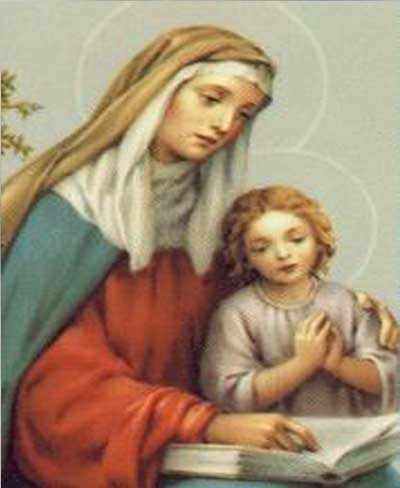
In the Catholic tradition, Saint Anne intervenes against poverty and for cabinetmakers; carpenters; childless couples; equestrians; grandmothers; grandparents; homemakers; housewives; miners; mothers; pregnancy; pregnant women; and women in labor.
Of St. Anne we have no certain knowledge. She is not mentioned in the New Testament, and we must depend on apocryphal literature, chiefly the Protoevangelium of James, which dates back only to the second century.
In this document we are told that Anne, wife of Joachim, was advanced in years and that her prayers for a child had not been answered. Once as she prayed beneath a laurel tree near her home in Galilee, an angel appeared and said to her, “Anne, the Lord hath heard thy prayer and thou shalt conceive and bring forth, and thy seed shall be spoken of in all the world.” Anne replied, “As the Lord my God liveth, if I beget either male or female, I will bring it as a gift to the Lord my God; and it shall minister to Him in holy things all the days of its life ” And thus Anne became the mother of the Blessed Virgin Mary.
The devotion of St. Anne was known in the East in the fifth century, but it was not diffused in the West until the thirteenth. A shrine at Douai, in northern France, was one of the early centers of the devotion. In 1382 her feast was extended to the whole Western Church, and she became very popular, especially in France. Her two most famous shrines are at St. Anne d’Auray in Brittany and at St. Anne-de Beaupre in the province of Quebec.
She is patroness of housewives, women in labor, cabinet-makers, and miners. Her emblem is a door. St. Anne has been frequently represented in art, and the lovely face depicted by Leonardo da Vinci comes first to mind in this connection. The name Anne derives from the Hebrew Hannah, meaning “grace.”
Saint Anne is often shown in paintings with Jesus and Mary as St. Anne is the mother of Mary, and the grandmother of Jesus. Two great shrines – that of Ste. Anne d’Auray in Brittany, France, and that of Ste. Anne de Beaupre near Quebec in Canada – are dedicated to her. The church of St. Ann in Jerusalem is believed to be built on the site of the home of Saints Joachim and Anne. There are even foods related to St. Anne and Joachim.
Saint Anne’s symbols are her careful instruction of Mary; crown; nest of young birds; door; Golden Gate of Jerusalem; infant Virgin in crib. Her shield has a silver border masoned in black, with silver lily on a blue field referring to the girlhood of the Virgin. She is often pictured as the Woman holding Mary or Jesus in her arms or lap; Woman at her betrothal to Joachim; Mother teaching Mary to read the Bible; Woman greeting Saint Joachim at Golden Gate; Woman with a book in her hand.
Related links:
Source: EWTN

